











 Tania Walters Publisher
Tania Walters Publisher














 Tania Walters Publisher
Tania Walters Publisher

most vulnerable. COVID-19 caused a lot of business casualties but the end of Eat My Lunch, in its original format, last month is another blow for kids who come to school with no lunch in 2023.

The Government scheme feeds more than 220,000 children a day with school lunches critical to student health and well-being, especially students from low-income families. Ensuring that children have the nutrition they need to learn. Research shows that free lunches do reduce food insecurity and poor health outcomes, what we need to focus on is the continuing battle to make sure that this is not a political ping-pong ball and that all political parties agree to support the funding of school lunch programmes.
Anew year, a new Prime Minister and an election date announced. With difficult times for families in 2022 only expected to deepen as we wade through 2023, vulnerable kids are once again at the coalface of hardship. High inflation and the subsequent cost of living crisis that follows always hits the poorest the hardest and children are the
In this issue, we take a look at the management and choices in aligning packaging needs and sustainability. We also have some cool menu ideas as kids head back to school for 2023.
Chairman Peter Mitchell Publisher Tania WaltersAdvertising Caroline Boe
The Ka Ora, Ka Ako | Healthy School Lunches programme requires suppliers and schools making their own lunches to prepare lunches that meet common special dietary needs as part of their standard lunch service.

• common food allergies, except where one student has a combination of three or more food allergies
• common food intolerances, specifically non-celiac gluten sensitivity and lactose intolerance » all religious dietary requirements
• ethical dietary requirements – vegetarian and vegan diets may also be followed for religious reasons
Providing lunch should not put students at risk. Suppliers and schools making their own lunches should work within their expertise and capacity.
A small number of students have multiple or high and complex dietary requirements that
fall outside the range of typical needs catered for as part of the standard lunch service. These high and complex special dietary needs include:
• rare or multiple allergies, generally three or more – these will be considered on a caseby-case basis and may need to be excluded from standard provision
• intolerances other than common intolerances listed above, such as fructose intolerance, FODMAP (fermentable oligosaccharides, disaccharides, monosaccharides and polyols) intolerance, and other medically diagnosed intolerances
• other medically prescribed diets that that fall outside the range of typical needs catered for
• multiple medical conditions that require special diets, for example allergies combined with dysphagia
• special diets that are already funded for provision by District Health Boards.
Suppliers, and schools making their own lunches, may not feel they are able to provide a special meal safely. This may be because:
• the risk of a mistake in preparing the lunch is too high, or
• the risk to the health and safety of the student is too great.
• the meal requires specialist knowledge to provide a nutritionally balanced diet if there
are several food exclusions or complex needs. In these situations, the Ministry of Education will work with schools, whānau and suppliers to find an alternative solution so an appropriate lunch is provided.
Schools and kura should seek any special dietary information from students, parents and whānau and provide this information to their supplier or kitchen manager.
The Ministry of Education has provided a standard form to help gather this information which includes recording information on how to keep students with allergies and special dietary requirements safe. This information should be shared with your suppliers or school kitchen. Unless you have prior permission from a parent, guardian or caregiver, information must be anonymised before sharing with your supplier.
If a supplier wants to opt-out of providing lunch because the dietary requirements are too complex for them to manage safely, this must also be approved by the Ministry.
All special dietary needs should be reviewed regularly to make sure they are up to date, and if there has been a change in the student need it is important to update suppliers on any changes to dietary requirements as soon as possible. H
Children’s tastes vary. It can be challenging to provide healthy food that children want to eat and getting children to enjoy new foods can take time. The Ka Ora, Ka Ako | Healthy School Lunches Programme Healthy Food and Drink Guidance identifies the healthy options for foods and drinks in schools.
It classifies foods and drinks as green, amber and red. As a minimum standard, no red items should be included in school lunches. Red items are high in fats, salt, and sugar with
no nutritional value. They are often highly processed and eating lots of these contributes towards poor health.
Lunches should be made up of amber and green items. As suppliers transition
• are not part of an everyday diet

• may have some nutritional value
• are often more processed
• in large servings, can contribute to consuming excess kilojoules/calorie
towards offering healthier menu options, the proportion of green to amber items should increase and the frequency of amber items per week should decrease.
• are a good source of nutrition
• generally lower in saturated fat, salt and added sugar
• are mostly whole and less processed
• come from the four food groups: vegetables, fruit, wholegrains, low fat milk products, and legumes, seafood, eggs, and meat with fat removed
• Include some vegetables within every meal.
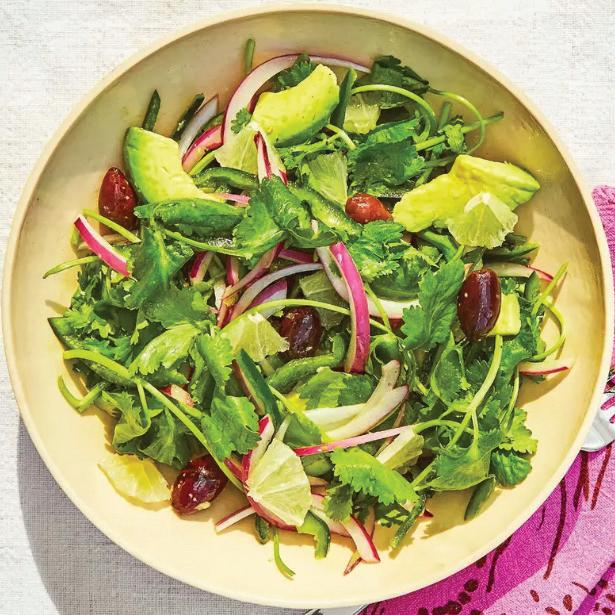
• If including baked items, check portion size recommendations as these vary across items.

• A dried fruit portion, including bliss balls, should be ≤30g (eg, if a bliss ball is 20g, nomore than one per serve).
• Slices, including muesli slices, should be ≤ 80g; a packaged muesli bar is ≥3.5HSR.
The Ministry has worked to develop a supportive framework for suppliers to ensure that all learners receive a quality nutritious lunch.
This includes:
• Discussions (via Zoom or Skype) with Ministry of Health or local health worker at the start of the contract to explore your menu options.
• have poor nutritional value
• are high in saturated fat, salt and/or added sugars
• can contribute to consuming excess kilojoules/calories
• are often highly processed food and drinks
• Advice and feedback from a Ministry inhouse nutritionist to review any new great menu ideas
• A six-month work plan to provide a pathway to nutrition.
For more information, visit www.education.govt.nz H
In Term 1 2020 an interim evaluation of the Healthy School Lunch programme was commissioned to assess the early impact of the pilot programme based on the priority outcomes of food availability, consumption, hunger reduction, wellbeing, and attendance.
Selected schools and kura from three regions – Hawke’s Bay/Tairāwhiti, Bay of Plenty/Waiariki and Otago/ Southland – took part in the evaluation.
The aim of the interim evaluation was to ensure our decisions for the future of the programme are based on evidence.
A second evaluation of the expanded programme was completed in 2022. The Impact Evaluation is an independent evaluation focussed on wellbeing in secondary school students, impacts on attendance across all year levels, and providing case studies on stories of greatest change for whānau.
The evaluation findings show significant positive impacts overall in terms of wellbeing, food security, and the nutritional value of Ka Ora, Ka Ako meals.
Food insecurity in New Zealand is a real issue for may households, with the latest 2020/21 New Zealand Health Survey indicating approximately 15 percent of children live in households with moderate to severe food insecurity.
Ka Ora, Ka Ako | New Zealand Healthy School Lunches pilot evaluation found that before the lunch programme was introduced, 21 percent of primary and intermediate school-aged kids were hungry after consuming

the lunch available to them. This finding suggested inadequate food quantities were available, the larger concern was the type of food available to them.
Data on Kiwi children’s dietary intake during school hours indicates that lunch

(between 12pm and 2pm) provides approximately 20 percent of their daily energy and macronutrient intake, and approximately 15 percent of daily calcium, iron, and vitamin A intake.
School-based food programmes have demonstrated effectiveness across several pertinent outcomes and in many international settings. One systematic review of 216 programmes in 52 low-and-middle-income countries found that school food programmes are one of the few education-relevant interventions that show a positive impact on school enrolment, attendance, and learning.
These same broad benefits, however, are not always replicable, particularly when comparing these results with those from trials conducted in high-income countries in the short term.
In one systematic review of universal free school meals in economically developed countries, 47 robust studies highlighted mixed
results. While nearly all studies examining universal free school meals found positive associations with school meal participation (diet quality, food security, and academic performance), the research findings shows only some significant effects for attendance and only for specific subpopulations rather than overall.
The New Zealand-based healthy lunches programme was first announced in 2019. Rather than targeting individual students (like in the U.K), it targets schools and kura with the highest concentration of kids that face socio-economic barriers and provides lunches to all the students within the school.
The universal approach rather than the targeted approach was intended to reduce the stigma associated with needing food and ensure those most in need took up the school lunches. But this could also be a possible reason as to why food waste has been reported by some schools within the programme.

The evaluation assessed the impact of the programme on secondary students’ wellbeing and the impact of the programme on attendance among all age groups. It extends upon the earlier evaluation of the Ka Ora Ka Ako pilot that focused on the programme’s impact on wellbeing and attendance among primary and intermediate-aged students involved in the initial roll out.

The evaluation serves an accountability purpose for the New Zealand Government (funders) and the Ministry of Education (MOE) (responsible for implementation) and
provides the New Zealand public with an understanding of what has been achieved by the taxpayer funded programme.
The evaluation, approved by the MOE and agreed with Cabinet, asses the non-monetary value of the programme for New Zealand. Of particular interest was to estimate the programmes impact on the wellbeing of students who rarely would otherwise have enough to eat, this evidence was intended to inform decisions about any future roll out of the programme.
In December 2018, the Government passed into law the Child Poverty Reduction Act 2018 and the Children’s Amendment Act 2018, with the goal to ensure successive governments retain a commitment to reduce child poverty and improve child wellbeing.
New Zealand’s first Child and Youth Wellbeing strategy was launched in 2019. The Ka Ora, Ka Ako programme is part of this strategy.
Since 2019, Ka Ora Ka Ako has grown and now reaches approximately 215,000 students in schools and kura. The pilot programme was delivered in 2020 and released in tranches across three regions. In response to the COVID-19 pandemic, the programme was expanded, covering more regions in New Zealand.
By 5 September 2022, there were 981 schools and kura enrolled in the programme.
The context of New Zealand schools and kura is that governance is a local responsibility bestowed onto their Board of Trustees. The local decision-making means that schools and kura decide which programmes they take part in and how they take part, reflecting their existing policies, priorities, facilities, and activities.
Nearly all the invited schools and kura (97.3 percent) agreed to take up the programme. Most of these participating schools and kura (715) are providing lunches through the external delivery model. Fewer schools and kura (231) hire staff and/or use school facilities to provide lunches to their students, or work in partnership with other schools and kura who have hired staff – the internal delivery model.
COVID-19 was a significant factor influencing programme delivery. The effects are clearly evidenced in student attendance rates, comparing 2019 with 2020, 2021, and 2022.
The evaluation was commissioned to help the MOE’s Policy and Special Projects team to understand the effectiveness of the programme and to inform the Government
and the public about the impact of the programme.
The evaluation made us of a mix of methods including:
• Survey of wellbeing among secondaryaged students
• MOE’s school attendance data
• Case studies exemplifying how the programme benefitted some students, schools, providers and family using a strengths-based, storytelling approach
The value of the programme was determined according to the measured impacts among students, and more aptly, how widely these impacts were felt among the student population.
The findings in this section were derived from the responses to the learner wellbeing questionnaire. Secondary students (from both schools within the programme and those not in the programme) were asked to complete two sets of questions asking them about the frequency at which they ate different type of food at home, and separately at school.
Key Findings:
• About 7.3 percent of secondary students within schools and kura with moderate disadvantage didn’t have sufficient food at
home on any day in the previous week
• More than half of secondary students (54 percent) in Ka Ora, Ka Ako schools had sufficient food in school everyday compared to the 40 percent of their peer respondents without the healthy lunch programme.
• The pilot was found to significantly improve satiety among those students most in need with students feeling 3.8 percent fuller on average than those who were not receiving the healthy school lunches.
• More secondary students are eating vegetables at Ka Ora, Ka Ako schools and kura while fewer are eating snacks and sweets.
The evidence for the pilot evaluation conducted with primary and intermediate

students demonstrated mixed results in terms of wellbeing. This was noted as unsurprising given the early stage of the pilot initiative.
One year later, the evaluation considered the wellbeing effects of the programme on secondary students using similar wellbeing measures – effects above and beyond what would have been achieved without the school lunches (measured by similar students not in the programme).

The evaluation demonstrated that the programme exceeded expectations in terms of wellbeing with large and significant benefits for those most underserved students.
Key Findings:
• Better mental wellbeing of secondary students, with those underserved students within the programme realising a 14 percent advantage in mental wellbeing than their underserved peers in other schools.
• This benefit appeared to spill over into the broader population of students with a 6.4 percent advantage in mental wellbeing for the average Ka Ora, Ka Ako secondary students.

• The programme resulted in improved energy and ability to undertake a range of physical activity with the programme contributing to a 16 percent physical functioning advantage for the most underserved students.
• Improved ability to function in school with the programme contributing a 20 percent school functioning advantage for the most underserved students.
• Improved emotional and social functioning with the programme contributing to a 9-12 percent advantage for the most underserved.
• The programme resulted in an overall better health quality of life for secondary students.
• An 8.4 percent reduction in secondary students designated ‘at risk’ of impaired health quality of life.
Regular attendance rates have been gradually declining in New Zealand since 2015. The recent drop, between 2020 and 2021, would be likely attributed to the COVID-19 pandemic.
While there has been mixed evidence about universal lunch programmes effects on attendance in developed countries, the MOE expected that providing food to students would result in an increase in attendance.
The evidence across the MOE attendance data demonstrated no change in relation to attendance for the overall student population.
The average primary and intermediate student made small but significant gains in emotional and physical functioning, and overall health quality of life. Secondary students benefited even more broadly in terms of wellbeing. Collectively the results demonstrated happier and healthier students. No Evaluation of the Broader Impacts of the Programme on Suppliers, Businesses and Society
Unfortunately, no evaluation has been done on the effects of the programme on suppliers, contributing businesses, employment, or larger social impacts such as waste (from food and packaging). H


Libelle is a nutrition focused food service provider, with a high focus on the school community. Founder and Executive Director reflects on 2022 and shares his perspective looking forward to the new year in school catering.

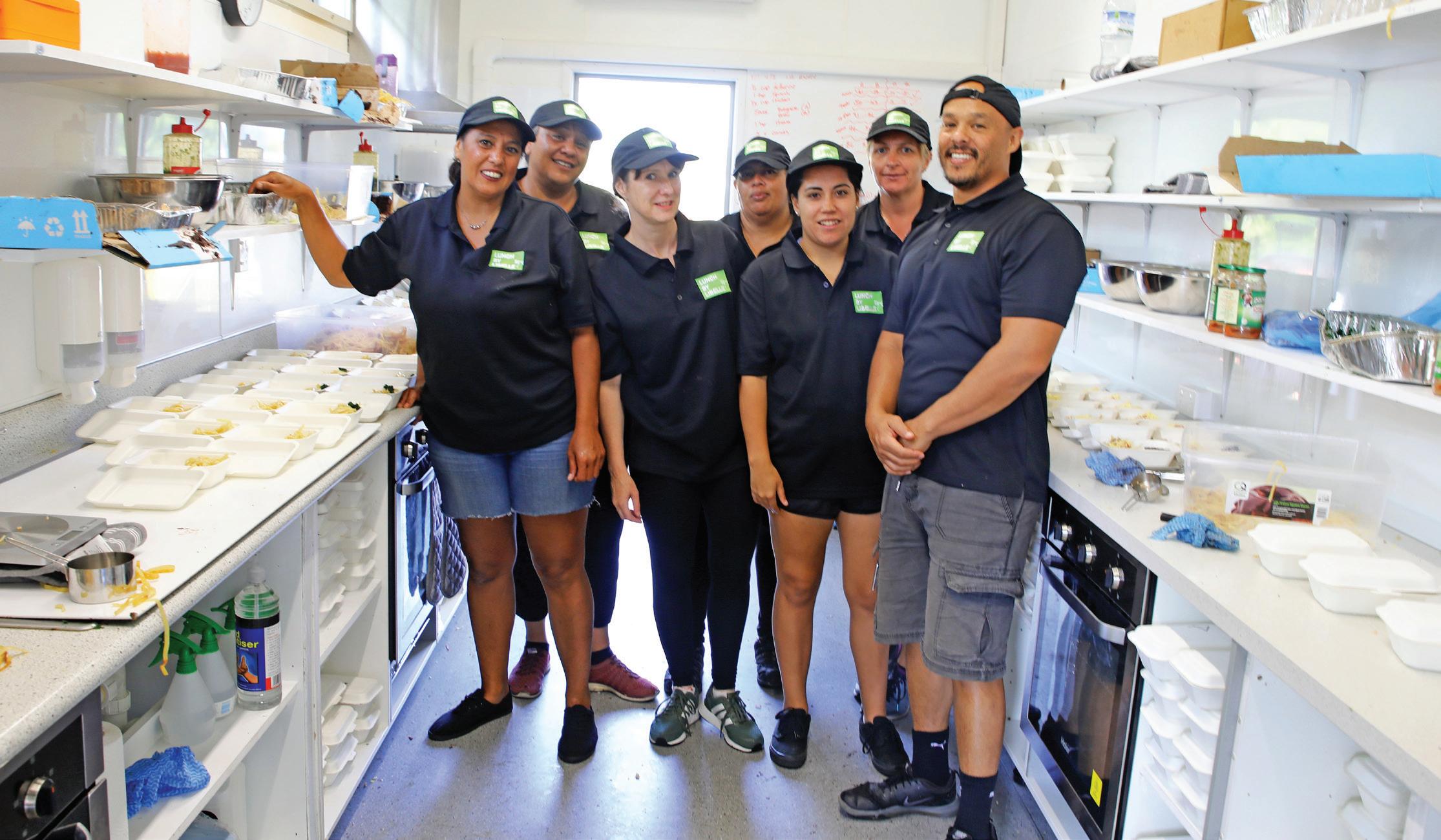
progress that was. Then, when the later Key Government rolled it all back, but nutritional standards stayed, driving school expectations of our Champion Tuck Shops.
This quality push from principals helped us engage students directly, in our ongoing menu and recipe R&D. Together, we developed the EAT SMART menu, we currently deliver over 20 menus at any given time, all delivering optimal nutritional payload, in-school.
• Staff
• Contracts and payroll
• Stocking and supply chain management
• Cost Control, auditing and reporting
• Consistency
• Service styles and speed
• Student experience and faculty engagement
• Menu development rotation and refresh
• Meeting nutrition guidelines in every meal, every week and whole term to students
“Reviewing 2022, I wonder, has there been a bigger year in school catering and nutrition in Aotearoa?
I’m coming up on 20 years since my wife Rochelle and I opened our first tuck shop, and I haven’t seen a more momentous year.
We, as a sector, are now enjoying the fruit (excuse the chef pun) of decades of work on school nutrition.
I think back to 2006, working with the Clark Government setting up the F&B Classification Guidelines for school canteens and kitchens. The huge change and
The school nutrition world changed in 2020 and Ka Ora Ka Ako (KOKA) arrived, a chance to feed hungry learners at a scale we had only dreamt of. Principal and school expectations we were embedded in, with Champion Tuck Shops collaboration, had set us up to contribute. We are just one provider, serving regions from the remotes of Northland, to New Zealand’s largest cities, making up over 30,000 students.
Reviewing 2022 we see a maturing programme and the chance to assess our achievements. For a supplier at scale like Libelle, to a single in-school operator, consider just how much work is involved in providing meals;
• Cleanliness
• Food safety
• Packaging, waste minimisation and sustainability
Every participating school can look at the scale of what KOKA is achieving and feel proud. The success of getting a programme of this magnitude up and running, feeding Tamariki, hungry learners at school, at mass scale is sensational!
Is the programme working?
Is it having the desired outcomes? Absolutely!
Can it be improved? Are there efficiencies that could optimise the nutritional payload to the student customer and the social impact? Most definitely!
The Select Committee report into attendance put a spotlight onto the programme, a source for celebration and for renewed rigour in 2023.
The Committee requested data on the impact of consistently feeding hungry learners nutritious meals - how it impacts engagement, learning, behaviour and attendance? How do they then measure its value and effectiveness?
We are fascinated in these questions and are asking a few more ourselves:
• What is optimal nutrition for kiwi kids?
• What are the health needs nutrition can address?
• How does it vary by environment and region?
• How to achieve sustainability?

• Are we utilising data for all of sector success.
Seeking insight, we have created an informal forum of principals and school leaders, Principals Of Nutrition In Education. Yes,the acronym is PONIES, getting the data directly from the horses’ mouth. I invite you to join.
PONIES is made up of Libelle clients, non-clients, KOKA schools and not. A way to capture insights, anecdotes, innovation and identify issues that in 2023 we can all progress.
If you or one of your team would like to be part of this inquiry, please get in touch by emailing hello@libelle.co.nz
The work of PONIES is for all of sector sharing. I think it imperative to create the means to have conversations about what a sustainable in school nutrition looks like –realistically – in the future. To chart our path to an even more nutritious 2023 for every kiwi learner.

I hope you had a great and restful summer break, because we need you to be part of that future.” H

Ordering school lunches is fast becoming the new normal for many Kiwi families. A growing number of kids eat food that’s freshly made by school canteens or external food suppliers.
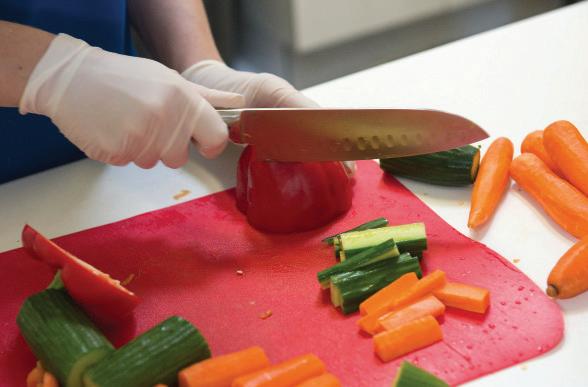


In turn, many schools are now using a lunch order programme, where meals are provided by local food suppliers, such as bakeries and cafés. If your school is thinking about going down that route, here are some ideas to help you find a great provider.
1. Have a clear idea of what your school is looking for
• Does your school have a food and drink policy?
• How many students are you expecting to cater for?
• What are your students’ budget and spending patterns?
• What are the ethnicities of your students?
• How many suppliers will you need? For example, do you need one supplier for freshly made foods and another for packaged foods and drinks?
• Do you have an online ordering system? If not, would you like to introduce one?
• Do you need the supplier to deliver at certain times?

• Do you have a storage space or facilities to keep food at the right temperature after it arrives?
• How will the food be distributed to your students?
2. Where to find potential suppliers
• The Heart Foundation’s Fresh Made supports food suppliers and school canteens to make healthier fresh-made foods. The website has a list of registered companies who supply healthier food choices –heartfoundation.org.nz
• Personal recommendations are an ideal starting point for sourcing any new suppliers. Do other schools in your community use an external provider?
• Food outlets in your local area – your local café or bakery may be able to deliver into your school
• Trade shows and magazines
• Your local Heart Foundation Nutrition Advisor. Visit heartfoundation.org.nz/about-us/ contact-us
• Always ask questions about their service and ask for examples of their products
• Ask for testimonials and feedback from existing customers. Good suppliers should be happy to provide these
• Visit the supplier to find out more about their processes and how they source, make, pack and deliver their products. Wherever possible, meet potential suppliers face-toface and see how their business operates
• Do they have a good hygiene rating?
• What are your supplier’s policies for food safety management?
• Are the fresh food items prepared daily?
• Remember, price is a key consideration but shouldn’t be the only reason for choosing a supplier. Quality can be compromised by price
• Consistent product quality is critical to ensuring the future success of your service
• Do they place food items in coolers for food delivery?
• Do they have appropriate food storage on site such as fridges and freezers?
• Do they require a minimum order quantity?

• Most food choices are made from fresh wholesome ingredients and come from the four food groups: vegetables and fruit, milk and milk products, breads and cereals, and lean meat, fish, poultry, seafood, eggs, legumes, nuts and seeds.
• The food supplied should be in line with the Ministry of Health’s Healthy Food and Drink Guidance for Schools. The Heart Foundation can assist on menu and recipe assessment and provide advice on this.


• Healthier foods are competitively priced against the less healthy foods
• These items should not be provided:
– confectionary
– deep-fried foods
– full sugar and artificially sweetened energy drinks
– full sugar drinks
– foods and drinks containing caffeine >56mg/serve
• Vegetarian options are available

• Where possible, healthy foods should be offered and presented in ways that encourage students to choose and consume them
• The menu is able to accommodate different ethnicities.
When you find a supplier you like, it’s important to create a service agreement. For example, make sure your food and drink policy is included, delivery times and frequency, level of order fulfilment or your policy on product substitution. With these agreements in place, your new supplier will know exactly what’s expected. Once you have settled on the suppliers you’d like to work with, negotiate terms and conditions and draw up contracts.
Free school meals have a lengthy history in the UK. The Education Act in 1906 allowed councils to provide food to pupils, but they rarely did. Only in 1944 was it legislated that they must give good quality, free meals to children. This was shortly followed by a similar ruling for free milk in 1946.
The Conservative government, under Margaret Thatcher, ended the free milk provided for all children. Her government also retracted nutrition requirements for school lunches. It triggered a downturn in the quality of food children from worse-off backgrounds had access to. Finally in 2001, school meals were once again held to national nutritional standards.
As the cost-of-living crisis pushes thousands into poverty, the UK’s free school lunch scheme is crucial in the fight to stop children going hungry.
Campaigners have repeatedly urged the government to expand the school meals scheme to make sure that every child is guaranteed a hot and nutritious meal five days a week.
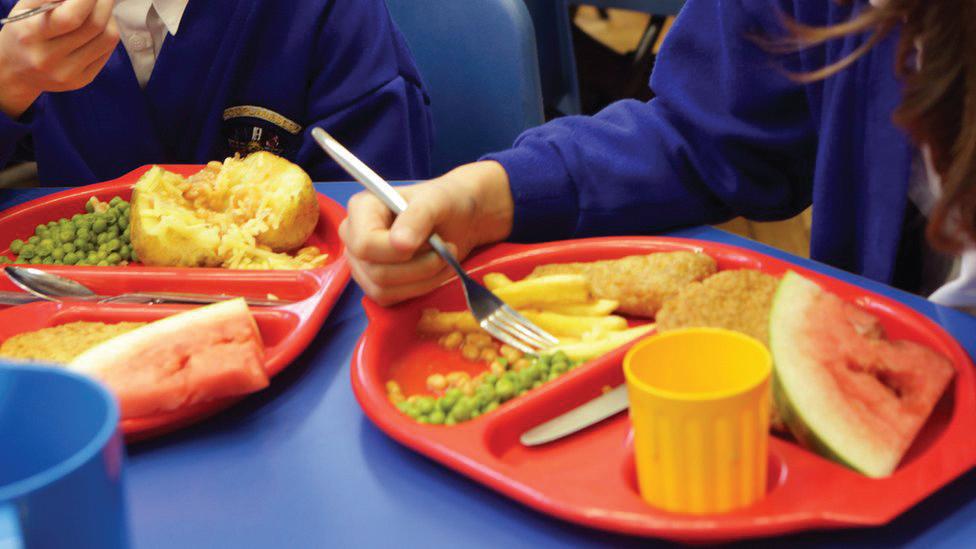
There are around 800,000 children living
in poverty who are not eligible for free school meals. So, in 2022, charities launched a fresh campaign backed by celebrity chefs Jamie Oliver and Tom Kerridge urging the government to make sure every child in a family receiving universal credit (a type of benefit that helps with living costs) gets access to free school meals.
Whether a child is eligible for free school meals depends on their age, where the family lives and the parents’ income. A child may be eligible for free school meals if they or their guardian are claiming one or more of several government benefits.
Many of the youngest children in the UK
are also eligible for free meals regardless of their parents’ income. In England, all children in reception (new entrants), year one and year two are guaranteed a free lunch (and sometimes milk) as part of the universal infant free school meals scheme.
In Scotland, children at local council schools can get free school lunches during term-time in primary one to five.
The Welsh government has announced that all children in primary school will receive free school meals by 2024 – currently, the majority of local councils are offering meals to every child in reception. The aim is that every child in reception, year one and year two will be given meals by April 2023.
Just under 1.9 million children are eligible for free school meals in England, according to the latest government figures. This is 22.5 percent of state school pupils.
Recent research has found free school meals could actually generate billions for the UK economy.
Commissioned by the Impact for Urban Health and analysed by PwC, the analysis found for every £1 invested in providing free school meals to all children in households on universal credit, £1.38 would be returned over the next 20 years through “core benefits” across social, health and educational areas.
This would result in £8.9billion for the
economy in core benefits, helping with savings in schools, increased lifetime earnings and contributions, increased savings on food costs for families and savings for the NHS.
A further £16.3bn of indirect benefits could come through wider economic and supply chain gains, such as growing the school food economy through expansion of school catering employment opportunities, resulting in £25.2bn total potential benefits.



In most areas people can apply through their local authority’s website and can find out more about how to apply if they live in England through the government’s website. There’s a different process to apply depending on where you live.
Since 2014, every child in reception, year 1 and year 2 in state-funded schools has been entitled to a free school lunch, regardless of their economic situation.
School governing bodies must provide school meals to a pupil free of charge if the pupil and/or a parent meets eligibility criteria set out within s.512ZB of the Education Act 1996 and a request is received for free meals to be provided either by the pupil or someone acting
on their behalf.
The government encourages all schools to promote healthy eating and provide healthy, tasty, and nutritious food and drink. Compliance with the requirements for School Food Regulations 2014 is mandatory for all maintained schools including academies and free schools. These school food standards are to ensure that food provided to pupils in school is nutritious and of high quality; to promote good nutritional health in all pupils; protect those who are nutritionally vulnerable and to promote good eating behaviour.
Here, schools apply to be a part of the Ka Ora, Ka Ako programme and can choose to either create the school lunches in-house or use a tendered supplier.
The difference in the UK is that it’s the parents/guardians or the children themselves who sign up to the government programme, then, regardless of what (state-run) school they go to, they have access to a free school meal.
This means there is less food waste as each school knows the exact number of children in the programme. School governing bodies can decide the form that school lunches take

but must ensure that the lunches and other food and drink provided meets the school food standards.
Facilities to eat the food that they bring to school must be provided free of charge for pupils not taking school meals. As a minimum these facilities should include accommodation, furniture, and supervision so that pupils can eat food they have brought from home in a safe and social environment.
Four- to 6-year-old children in state-funded infant, primary and special schools throughout England are eligible to receive a free piece of fruit or vegetable every school day outside of their school lunch through the School Fruit and Vegetable Scheme (SFVS) administered by the Department of Health. There is no statutory requirement for schools to participate in this scheme.
Governing bodies are strongly encouraged to work with the senior leadership team to develop a whole school food policy, including:
• setting out the school’s approach to its provision of food


• food education (including practical cooking)
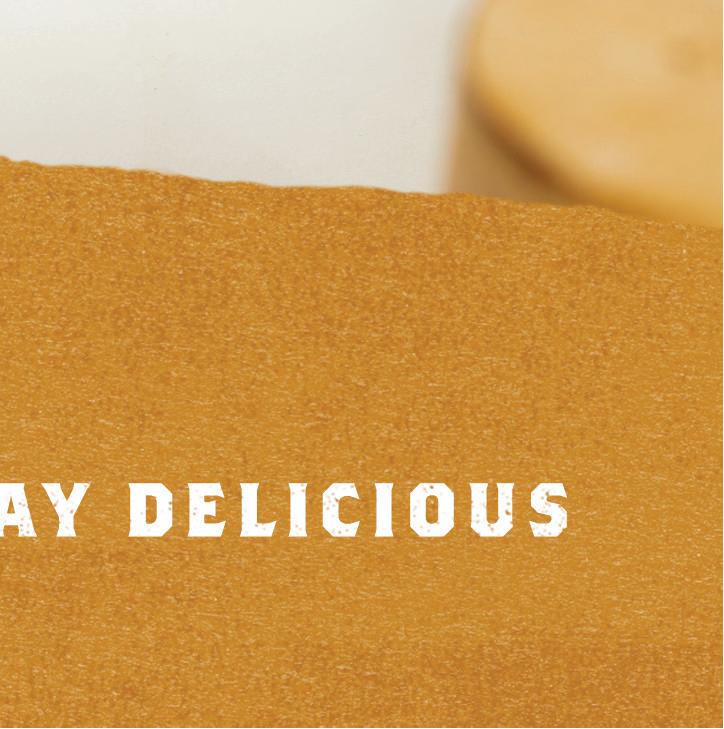

• the role of the catering team as part of the wider school team
• the school’s strategy to increase the take-up of school lunches H
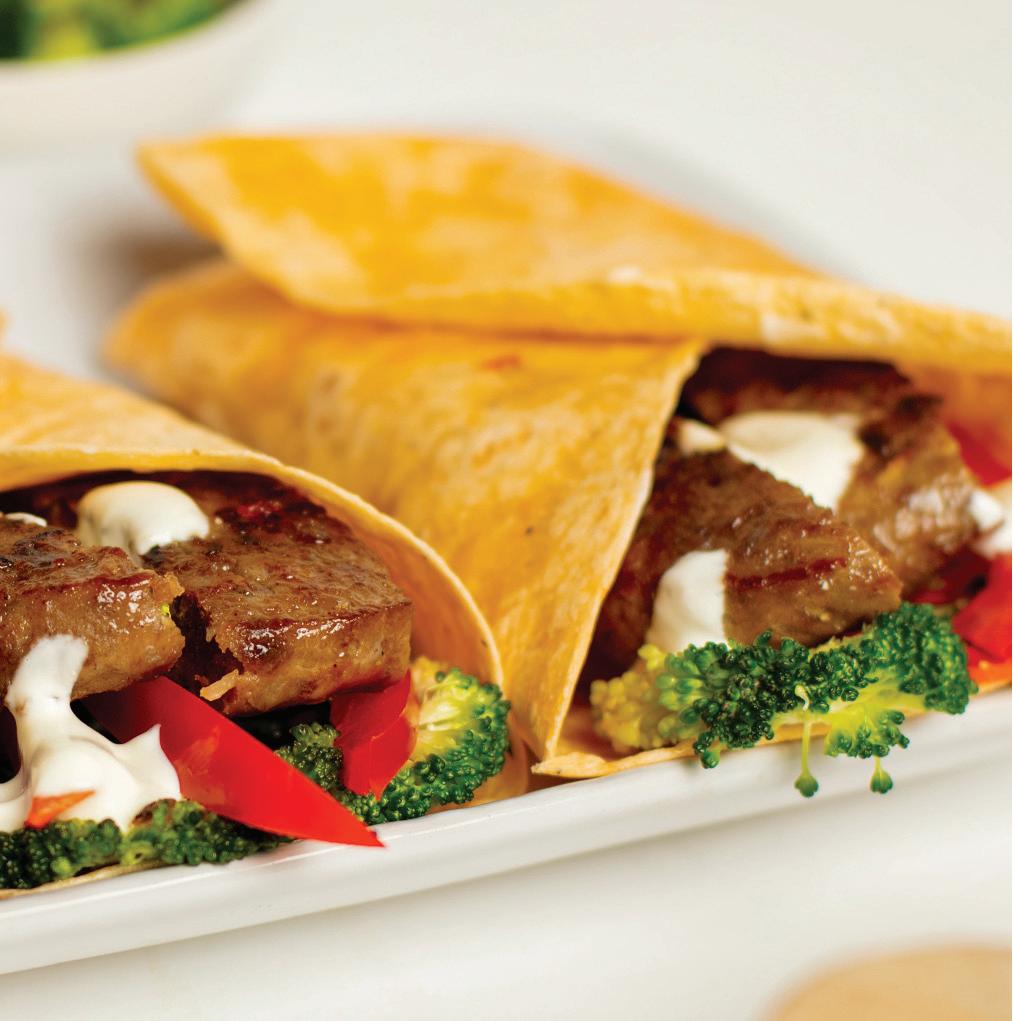
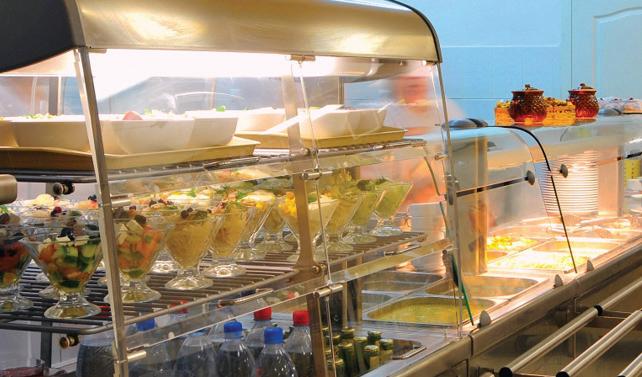
Fresh Made is a Heart Foundation service that helps food suppliers, school canteens and early learning services make their food healthier for students.
If you’re a food supplier, school canteen, or early learning service Fresh Made can provide comprehensive resources to help you make healthier choices. Our resources include menu assessment, tips on how to make menu changes and help with recipe development.
Over the last few years, many schools and early learning services have started to outsource their lunch programmes where the meals are provided by local food suppliers, such as bakeries, cafés, and takeaways. Ordering school lunches online is fast becoming the new normal for many New Zealand families.
Fresh Made supports food suppliers and school canteens to make these fresh-made foods healthier.
Food suppliers, school canteens or boarding school caterers submit their menus and recipes to the Heart Foundation for assessment.

The recipes are analysed, and feedback and advice are given on any changes that could be made to meet the Fresh Made criteria.
If the changes are made your company becomes a Fresh Made registered company and will be listed on the Heart Foundation website. Once registered you can start marketing your new healthy menu.
Consuming healthy foods and drinks every day not only improves students’ overall health but can also improve their concentration and behaviour.
Here are some of the ways Fresh Made can benefit your school or early learning service:
Contribute to the health of children by providing healthier freshly made foods which will improve children’s attendance, behaviour, and performance.
Demonstrate to parents that your school is taking responsibility for children’s education, their health and wellbeing.
Fresh Made can help you meet the growing demand for healthier freshly made foods. Receive exposure to schools and early learning services across New Zealand through the Heart Foundation network.
Fresh Made provides the following resources to assist lunch providers to achieve registration and create healthier foods that meet the Fresh Made guidelines.
Standardised recipes - These recipes are specifically developed to meet Fresh Made Criteria and can be altered and personalised to meet your students’ tastes and preferences.
Sample menus - Get inspired with our seasonal sample menus for schools and early learning services. Blogs – Tips about healthy cooking, planning your menu and healthy ingredient choices.
Reproduced with the permission of the Heart Foundation. H
With a little planning sandwiches, rolls and wraps can be highly nutritious and fun to eat.


Limit the menu to a realistic number of sandwich choices to offer each day depending on the equipment and staffing situation. Some larger canteens may be able to offer up to 10 fillings, while smaller canteens may not. Remember to take note of sales and any student feedback.
Offer some sample fillings for fussy eaters, for example, yeast extract, hummus, avocado, banana wrapped in a slice of bread etc.
Here are some simple steps to help you produce nutritious and appealing sandwiches, wraps and rolls:
• Use fresh bread and prepare sandwich fillings each day to preserve nutrients.
• Make sandwich fillings before making the sandwiches, to stop the bread from drying out.
• Once made, place damp clean cloths on top of the stack of sandwiches to keep them fresh.
• Wrap as soon as possible in clear food wrap, with the filling showing.
• Use labels or signs to help kids choose what they want to eat.
Bread
• Choose whole grain or wholemeal types. These contain higher fibre and nutritional values than plain white.
• Select rolls of different shapes (long, round,
seeded, or French stick), rēwena, fa’ apāpā, pita breads, tortilla bread, foccacia, panini, rye, bagels, baps.
• Create sandwiches in different sizes and shapes e.g. triple-decker for older students or four triangles for smaller appetites.
Spreads
• Spread margarine thinly, allowing about one pottle for every three loaves of bread.
• Use alternatives to margarine. You could try peanut butter, mashed avocado, or low-fat spreadable cheeses, such as cream cheese, cottage, ricotta or quark.
• Try small amounts of pickle, chutney, pesto, vegetable-based dips or hummus for extra variety.
These can contain hidden amounts of fat, salt and sugar.
• Look for low-salt sauce and low-sugar, lowsalt tomato sauce.
• Use ready-made sauces in small amounts.
• Vegetable-based sauces (e.g. tomato) are usually healthier choices than creamy sauces (e.g tartare sauce).
Reproduced with the permission of the Heart Foundation. H
Plastic is one of our greatest environmental challenges. It regularly ends up as waste in our landfills, our moana and whenua. Difficult-to-recycle packaging and products can interfere with recycling systems and are often used only once before being disposed of. Shifting away from hardto-recycle and single-use plastics will help reduce plastic waste, improve New Zealand’s recycling systems, and protect our environment.
Since 1 October 2022, retailers can no longer sell or distribute targeted plastic items and they can no longer be manufactured. The following items are no longer able to be sold or manufactured:


• Plastic drink stirrers (all plastic types)
• Plastic stemmed cotton buds (all plastic types)
• Oxo- and photo- degradable plastic products (subset of plastic type 7)
• Polyvinyl chloride (PVC) pre-formed food trays and containers (plastic type 3)
• Polystyrene takeaway food and beverage packaging, e.g., some sushi trays and takeaway containers (plastic type 6)
• Expanded polystyrene food and beverage packaging, e.g., foamed cups, bowls, plates, and some grocery products (plastic type 6)
Single-use Plastic Drink Stirrers
A single-use plastic drink stirrer is any beverage stirrer made wholly or partly of plastic, including compostable and biodegradable plastic, designed to be used once or a limited number of times before being thrown away.
Instead of single-use plastic drink stirrers, you can manufacture or supply:
• Reusable spoons
• Wooden (fibre) drink stirrers ideally free from intentionally added per and polyfluoroalkyl substances (PFAS). Reusable spoons (eg, metal) are a better
alternative to single-use drink stirrers made from other materials (eg, wood) because they create less waste.
Polystyrene (plastic type 6) used to package ready-to-eat food and beverages including:

• trays
• takeaway containers
• clamshells and bowls
• or any other form of polystyrene packaging which is filled with food or beverage at a retailer but not manufactured there.
Ready-to-eat means food and beverages supplied for immediate consumption such as food and beverages purchased for takeaway from a restaurant, café or stall, or cups provided at an office water cooler. It also includes food and beverages prepared for immediate dine-in eating (eg, sushi prepared at a café or restaurant).
The ban applies to any type of polystyrene (eg, expanded polystyrene and rigid polystyrene).
• Expanded polystyrene includes expanded polystyrene and extruded polystyrene - both of which are white foams. It is often used for takeaway clamshells and bowls.
• Rigid polystyrene includes rigid polystyrene and high-impact polystyrene – both of which are brittle. Rigid polystyrene is clear and can be confused with PET or even glass while high-impact polystyrene is white.
ALTERNATIVES:
Instead of polystyrene packaging for readyto-eat food and beverages, you can supply or encourage reusable packaging. Businesses can encourage customers to bring their containers, or you can sign up for a reusable container/packaging service that provides the type of packaging you need. If reusable packaging is too challenging for your product/service, you can supply singleuse packaging made from:
• Recyclable plastic packaging such as PET
(type 1) and PP (type 5), or
• Fibre-based packaging that is ideally free from intentionally added PFAS.
Single-use alternatives are available in Aotearoa New Zealand and online. From 1st July 2023
Plastic produce bags, tableware, straws, and non-home compostable plastic produce labels will be banned or phased out from the 1st of July 2023.
 By Mid-2025
By Mid-2025
All other PVC and polystyrene food and drink packaging will be banned or phased out by mid-2025.
For more information and ideas on alternatives, visit the Ministry for the Environment’s website. H














We have the packaging solutions to suit your menu






Huhtamaki has a wide range of solutions to cater to multiple applications. Made from rapidly renewable materials such as sugarcane and bamboo, our range is responsibly sourced and certified.




Sourced Responsibly. Disposed of Thoughtfully.

Our delicious newly developed muffins, brownie and blondie, are the perfect option for the Sweet Baked Items category, in the Ministry of Education’s Ka Ora, Ka Ako | Healthy School Lunches programme.

Our bakers keep ahead of nutrient criteria as set by the Ministry of Education, ensuring our products are suitable for children of New Zealand.

Contact us for samples of our delicious baked treats! Get

Venerdi is a New Zealand owned specialty gluten free bread manufacturer.




As well as being found in the retail bread aisles, Venerdi are proud to have worked with and supplied many international and well-known food service brands with Venerdi’s impeccable products earning their trust.
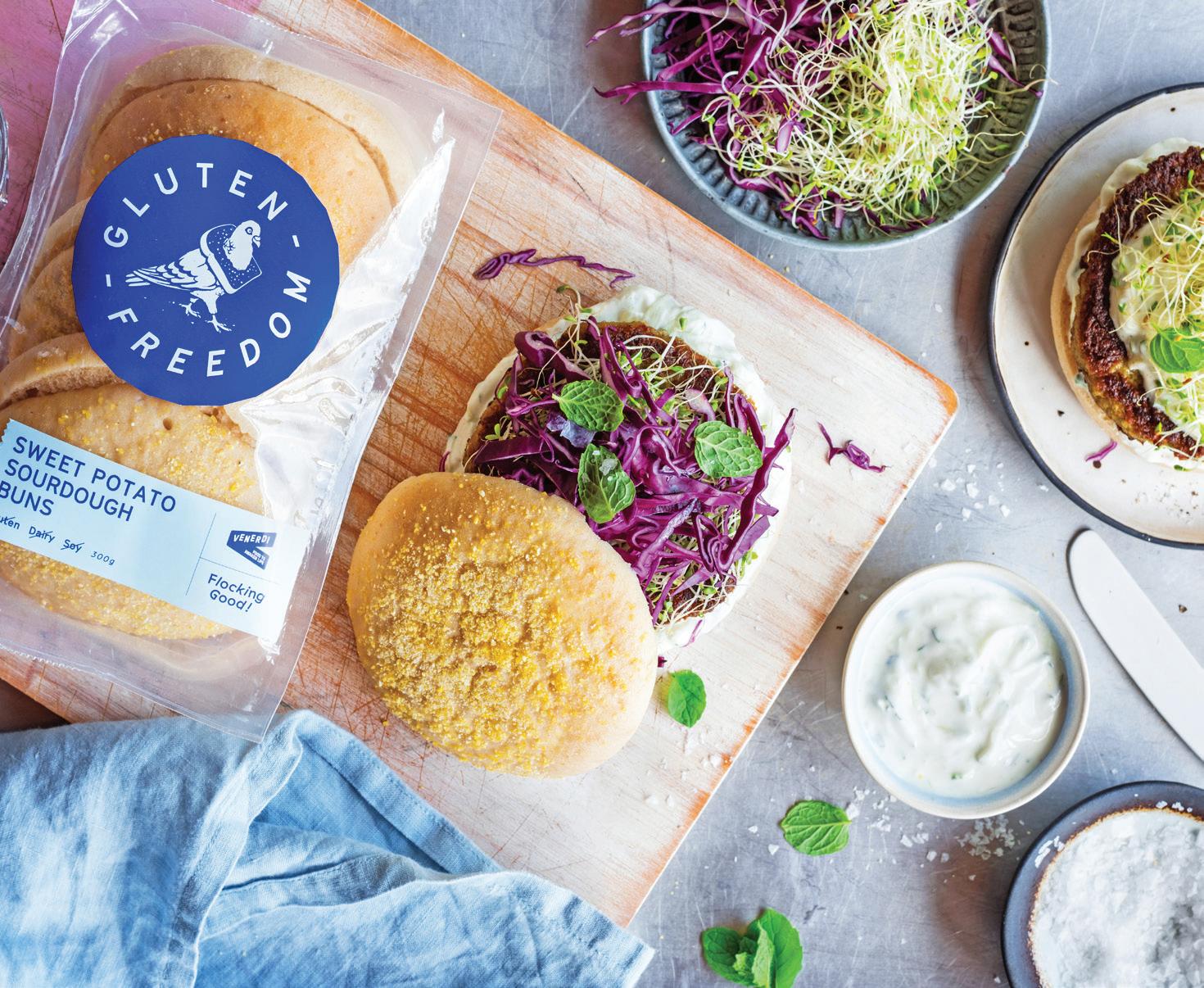
Venerdi is proud to be SQF (Safe Quality Food) accredited. A rigorous and credible food safety and quality program that is recognised by international retailers, brand owners, and food service providers so you can be confident in knowing that our products meet the highest possible global food safety standards.
Venerdi’s aim is to provide you with products of the highest standard so you can be confident of an outstanding level of customer satisfaction – without any compromise on taste or texture.


Since 2002, Venerdi’s foodservice range has grown to include a variety of quality pizza bases, buns, breads, bagels, and pitas.
For more information

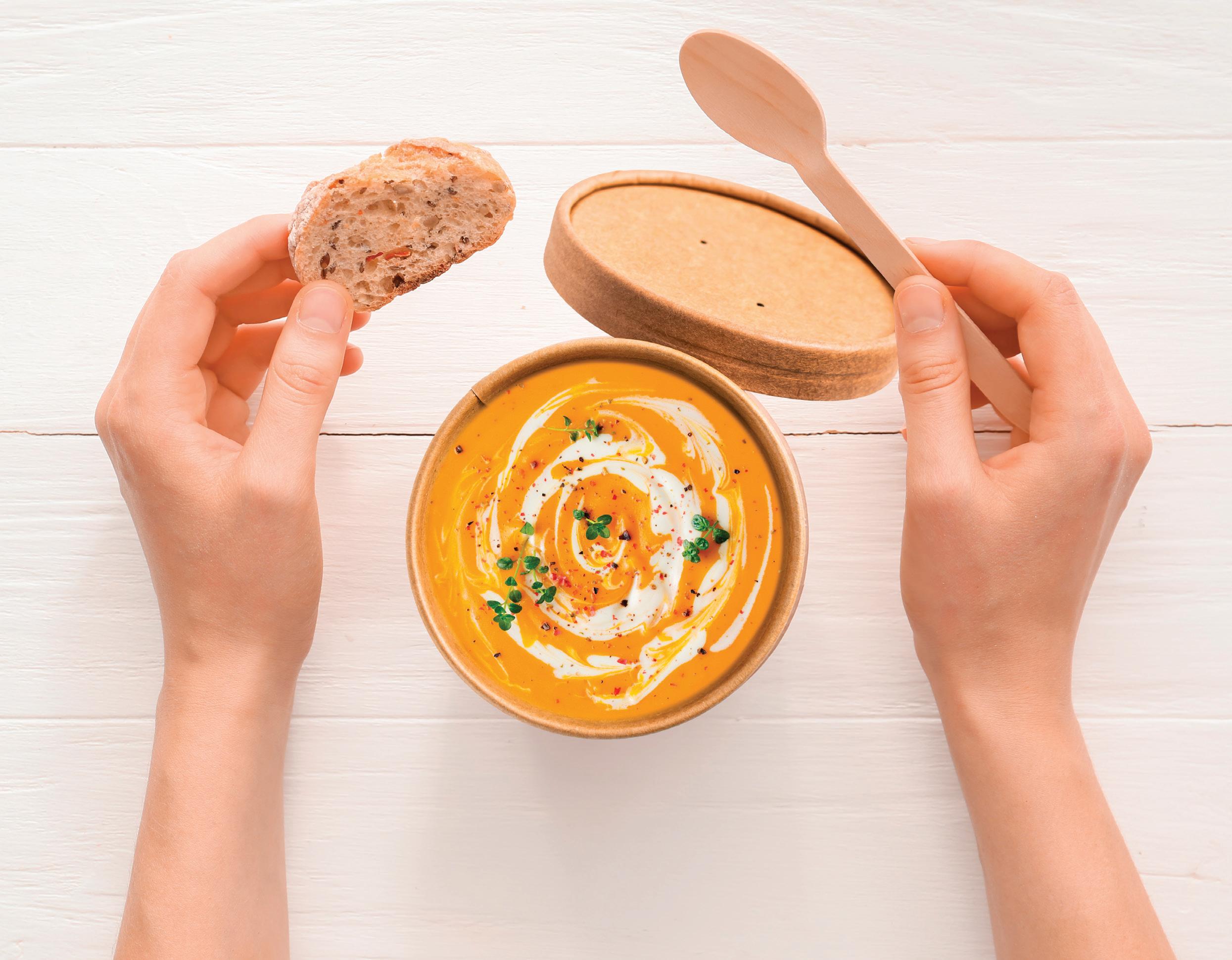
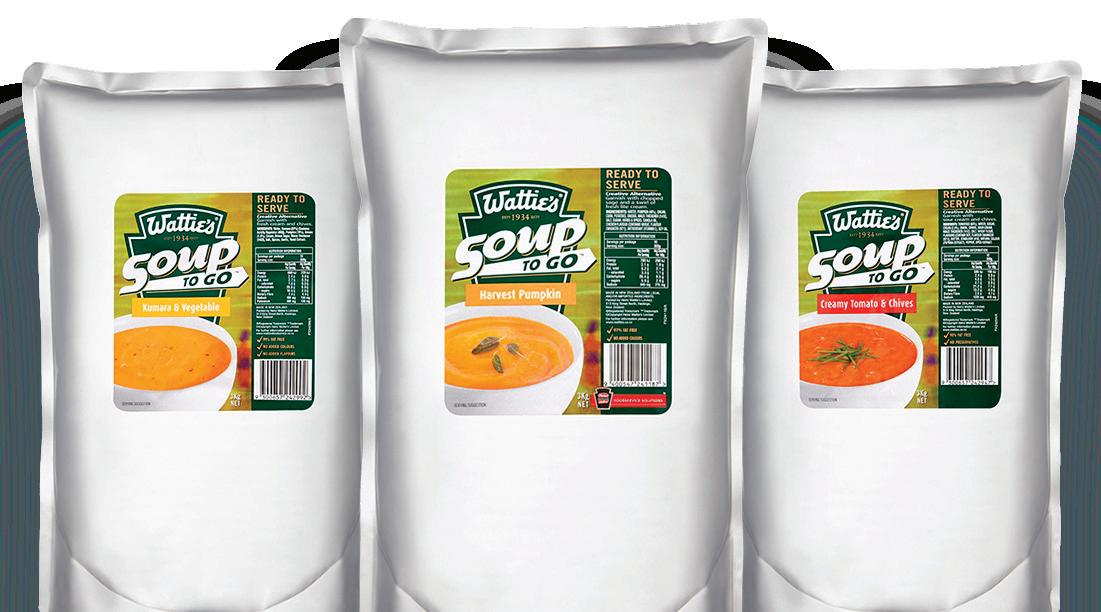

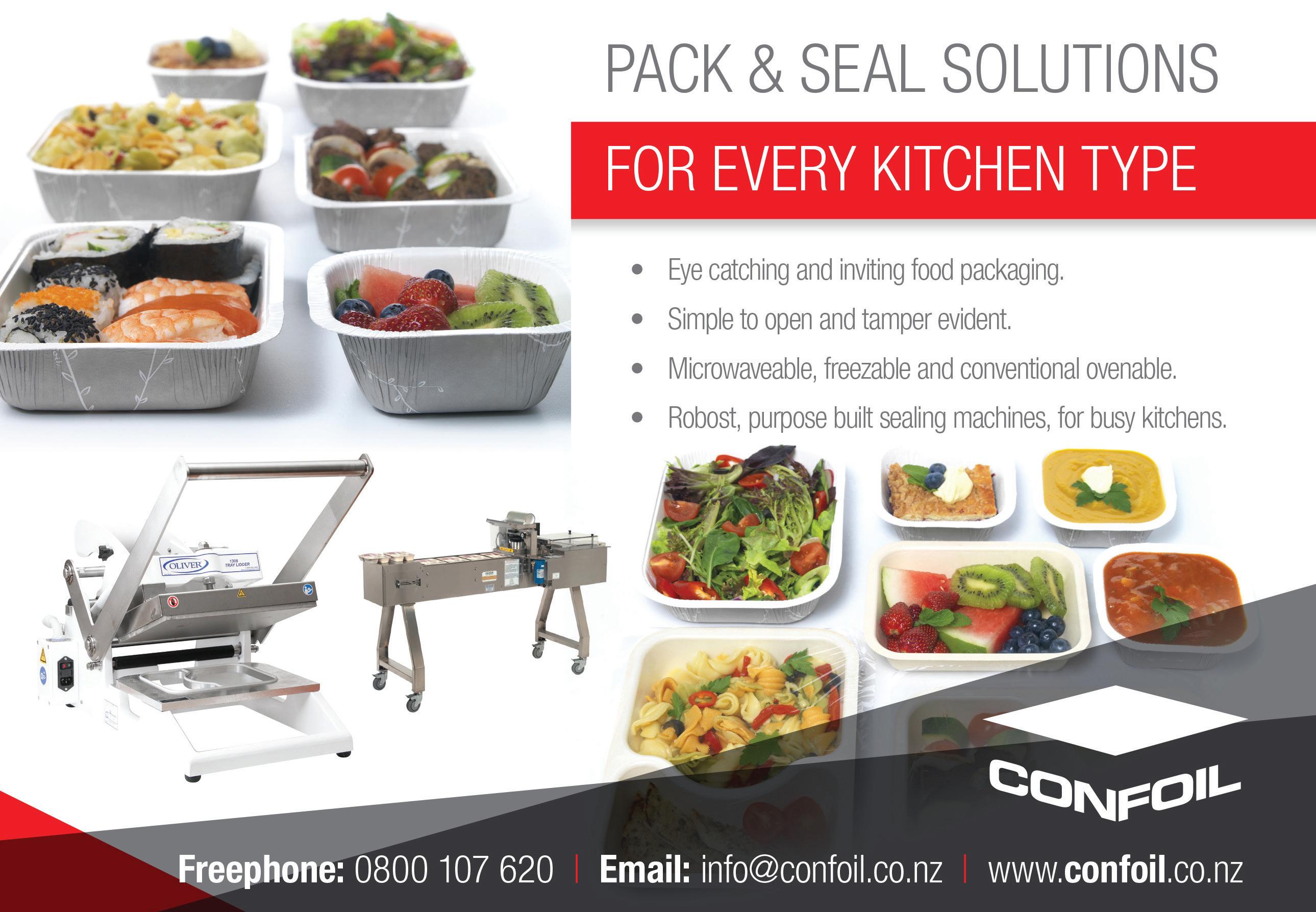


Would your washroom facilities get the thumbs up?

Partner
